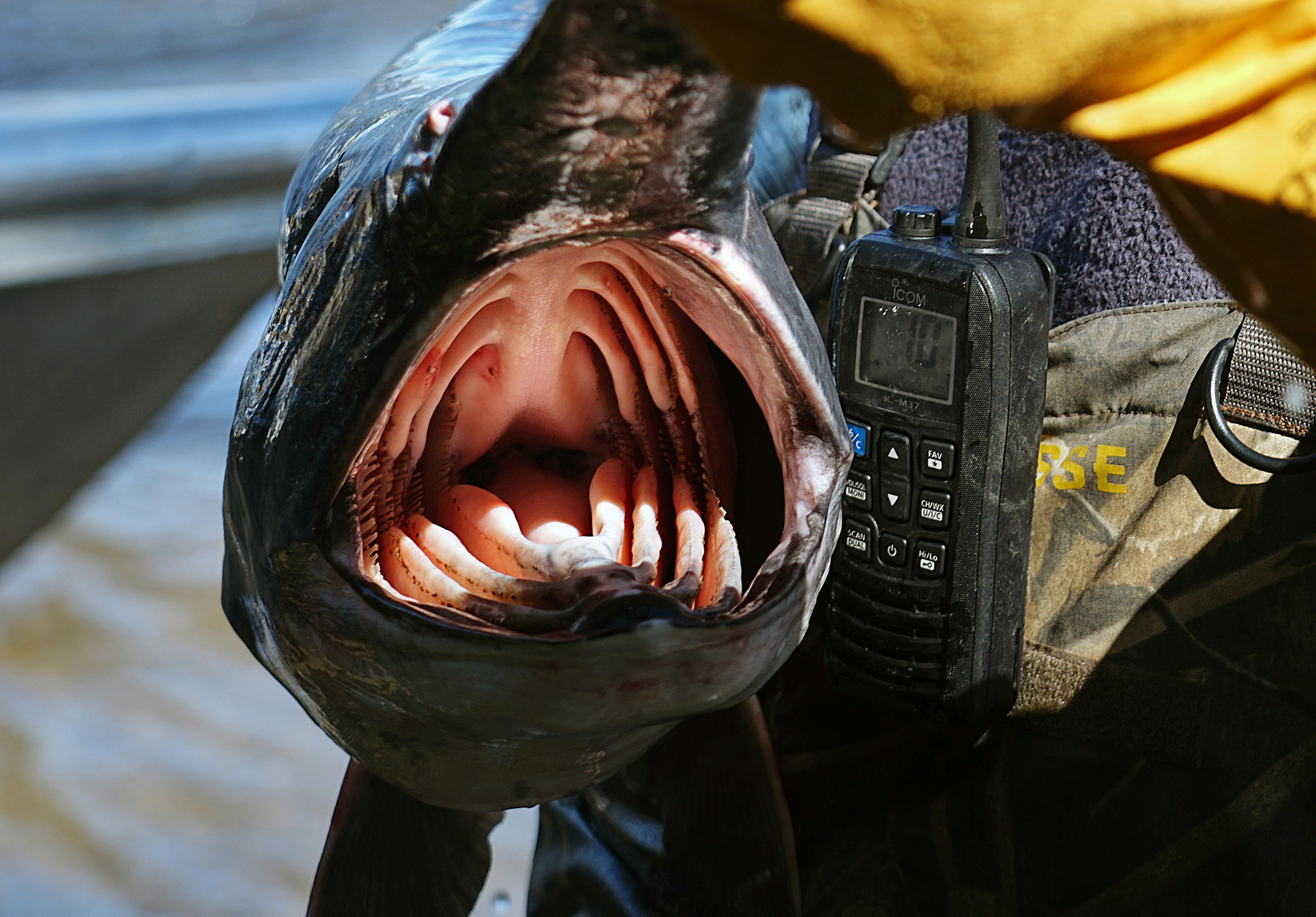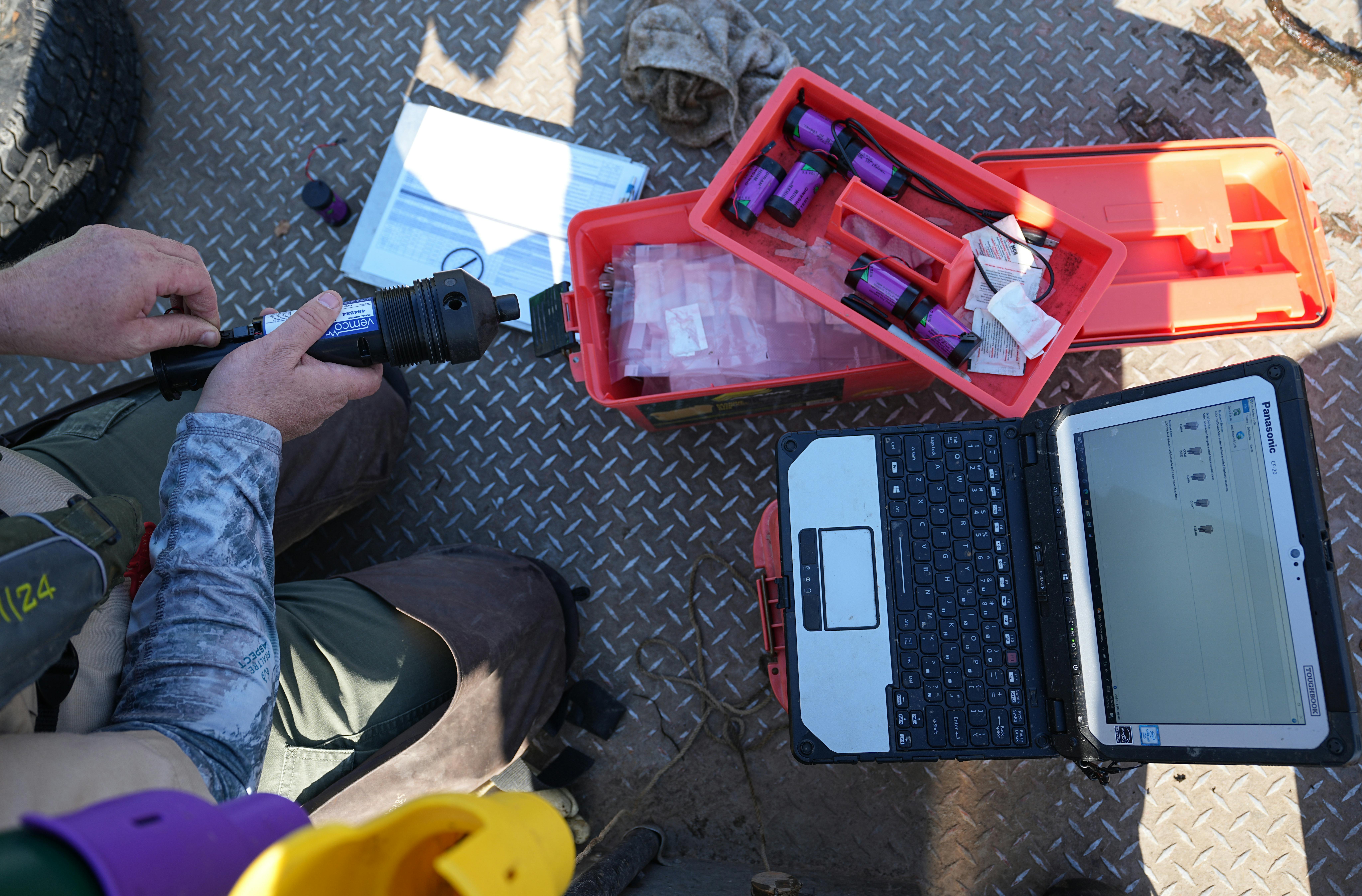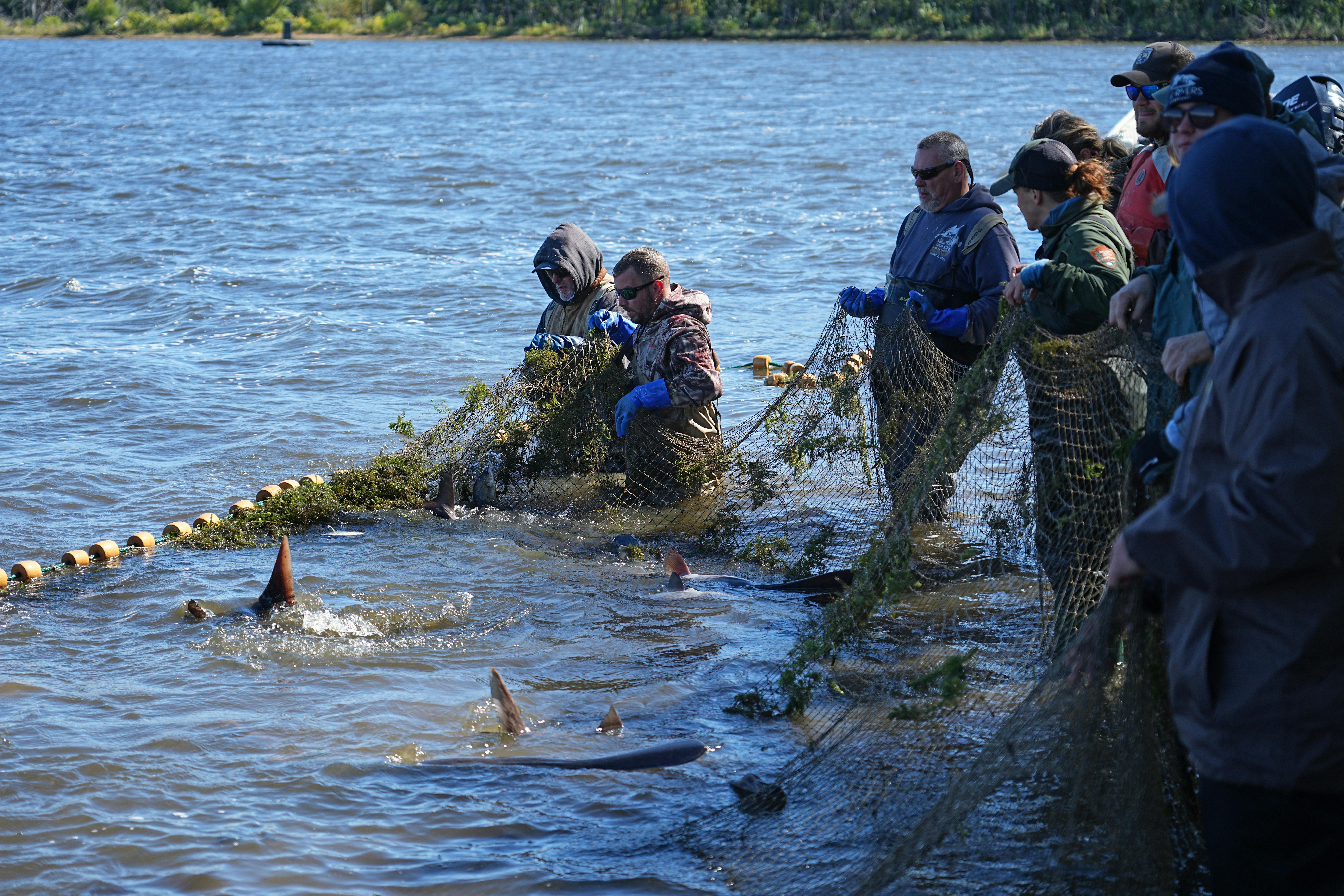Vanishing North
An occasional series in the Star Tribune documenting the biodiversity crisis and the people struggling to head off extinction for Minnesota’s most vulnerable animals and plants.
A dozen boats shot out of the launch together in the early light like a school of orcas on the hunt. They headed north, upstream, to a quiet backwater of the Mississippi River, where they began setting thousands of feet of net. It was early fall, and cold.
Tim Ohmann, a fisheries specialist with the Minnesota Department of Natural Resources, took a sniff of one of his gloves. "I still have some of that paddlefish smell on me," Ohmann said. "We're going to see some paddlefish today."
Spend enough time netting fish on the Mississippi and you can start telling species apart by their odor alone. Muskies, sturgeon, catfish and carp all have their own subtle differences, Ohmann said.
"Oh yeah," agreed Kayla Stampfle, the DNR's invasive carp field lead who was in the boat with him. "Walleye and walleye fingerlings even smell different."
The worst-smelling fish in the Midwest is a dead shad, Ohmann said. Paddlefish are among the best, emitting more of a pleasant aroma, he said.
Stampfle and Ohmann were on the river near La Crosse, Wis., that day to catch invasive silver and bighead carp. But their operation — conducted every year with a handful of other state and federal agencies — offered a rare chance to pull up some of Minnesota's native paddlefish. In this state, the ancient, gentle river giants now exist mainly around the Mississippi.
Even in a place obsessed with fishing, where opening day of the season is practically a holiday, almost nobody sees a paddlefish. Other than the 12 days a year when they are on display at the DNR pond at the State Fair, they exist more as a rumor. Outlandish and otherworldly, they haunt the state's river bottoms with 2-foot-long noses, beady eyes and shark-like fins. Their gaping mouths look like they could swallow a basketball whole.


If any paddlefish were caught that day in September, it would be a good sign that their population was still hanging on here at the northern edge of their range, even as dams have cut them off from many of the gravel beds they need to spawn. It would be telling if, even with all the pollution and development brought by the population growth of the last 200 years, Minnesotans could still coexist with one of the oldest species in North America.
First, Ohmann and Stampfle needed to set the nets that would corral all the fish in that corner of the river. The two hunched over near the front of the boat, feeding the net into the water. Buoy after buoy plopped down on the surface in a straight line, several hundred feet long. Using carabiners, they attached it to the nets set by the other boats to form a single giant barrier.
For more than a century, paddlefish have been all but ignored in Minnesota. Despite their size and their roe — which has become a prized caviar — commercial fishermen have never targeted them here, as they have in places such as Indiana and Oklahoma.
They are almost invisible to anglers and boaters because they are filter feeders, living off microscopic plankton. They never bite bait or lures. They are always on the move.
Their long spoon-shaped bills function like antennae to sense the electrical charge emitted in even the slightest movement of another living thing. The snouts are so finely tuned that paddlefish can detect the movement of a single zooplankton.
American paddlefish once ranged across much of the U.S., including the Great Lakes. They've dwindled now to the Mississippi River, a handful of tributaries and the Mobile Bay watershed in the South. And they are almost alone now — most of their ancient peers are long extinct. They, along with sturgeon, survived the last 125 million years — the fall of the dinosaurs, the coming of the glaciers, the great floods and retreat of the ice age. A Chinese paddlefish (Psephurus gladius) also survived into modernity, living in the Yangtze River. It too was over-fished and cut off from spawning grounds. It was last seen in 2003.
This year, scientists declared the Chinese paddlefish extinct.
Back on the river near La Crosse, the herding operation was about to start. One boat armed with a small electrical charge and noise would methodically move between the nets set by the dozen other agency boats, scaring fish into smaller areas until they could be scooped up by a single net.
But there was a problem. Ohmann and Stampfle had run out of netting, leaving about a 10-foot gap between them and the shore. The two scientists, however, had prepared for this by bringing hand tools.
Toilet plungers.
Ohmann pumped the surface with his plunger. It shot noise and bubbles deep underwater, creating enough ruckus to keep any fish back while the herding boat passed.
"I went to college for this," he shouted.
The Minnesota DNR knows much of what it does about the local paddlefish population because of invasive carp. An effort to tag and track the fish started about 10 years ago, when lawmakers were so worried about silver and bighead carp invading the state's waters that they wanted to permanently close off a lock and dam in Minneapolis to try to disrupt their path north.
Before the gates could be closed, the DNR needed to find out if it would hurt the paddlefish, said Joel Stiras, DNR fisheries specialist.
Stiras and others tagged about 50 of them and have been following their movements ever since.


What's become clear is that the fish love the Minnesota River. They patiently wait at the dams south of Minneapolis, month after month, for the water level to rise and the gates to open. As soon as they get a chance, they swim through. Then, once they're past the obstacles, they almost always swim from the Mississippi into the Minnesota River. That has long been one of the state's dirtiest rivers, yet the fish seem to prefer it over cleaner waters such as the St. Croix, Stiras said.
"We don't know if it's a spawning place or what, but almost every single one goes to the Minnesota," he said.
Someday that tagged data may help the DNR discover answers to some key questions: Where exactly do the paddlefish prefer to spawn? If they can't get there, do they still try to spawn? If so, are they successful? How do they survive the winter?
One mysterious trait has gnawed at Stiras. Every other fish he has studied in Minnesota goes to a set depth in winter to chase their prey. While that depth fluctuates, the fish always seem to stay relatively close and will predictably move as prey or oxygen levels demand.
Paddlefish don't do that. They start at one depth and slowly, steadily move up to the surface of the river over the course of a few days. Once near the top, almost like they're waking up from a spell, they seem to suddenly realize where they are and swim back down to where they started. Then they do it again.
Ohmann and Stampfle waited on the shore of the cove. All the nets had been set. The herding boat had made its passes. All that was left was to wait for the crank to pull in the large seine net and see what was living in these waters.
"It goes really slowly, until it goes really fast," Ohmann warned, as the net continued to roll in, empty.
Ten minutes passed. Twenty minutes. Then movement. The water roiled. Shark-like fins broke the surface. The fish charged and splashed. Long, round noses stretched into the air.



Stampfle reached into the water and pulled out a wriggling 4-foot paddlefish. Its snout poked out like a baseball bat, as long as about half of the rest of the fish. Its eyes were so far forward that they were almost a part of the snout.
"Feel that nose," Stampfle said.
Smooth as a dolphin. Its round belly and white chin looked like they belonged to a midsize shark. But as the fish opened its mouth, there were no teeth, only arches of gills.
Evan Sniadajewski, fisheries technician with the Wisconsin DNR, pulled out another — a little larger than Stampfle's. He couldn't hide his excitement as he cradled the fish.
"You are so cool," he said to the fish. "You are so cool."
They pulled out and tossed back 31 paddlefish in total, of all ages and sizes. Before Stampfle let hers go, Ohmann ran his hand down its side. The smell of the paddlefish soaked back into his glove as the creature paused in the shallows, then disappeared.
Share your story
Please share feedback, questions and suggestions by using the form below. Our reporters will not share your information without your permission. Thank you.